
views
- Take the pen apart and flush the nib with cool water. Soak it in diluted ammonia and water overnight, then air dry.
- Drain excess ink from the converter and fill it with cool water, then shake it and pour the water out. Repeat until the water runs clear.
- Polish the outside with a soft cloth, or use silver polish for silver pens. Store upright with the cap on.
Cleaning the Nib
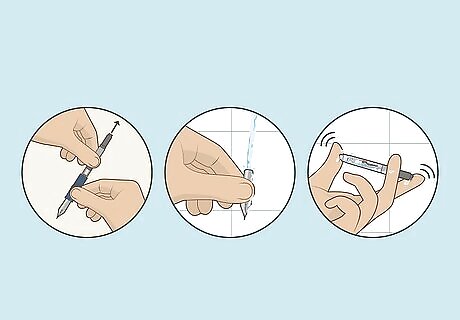
Clean the pen if you are refilling the ink for the second time. Fountain pens need to be cleaned periodically to ensure that they will work optimally. When you replace the cartridge every second time, it’s time to clean your pen. The same goes for refilling the ink bottle; if you’ve refilled the bottle twice, it’s time to clean the pen.
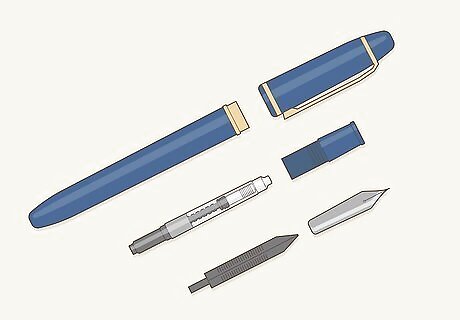
Take the pen apart. A fountain pen has several different parts that will need to be disassembled in order to clean the pen thoroughly. Unscrew the pen grip from the barrel. Take care with the ink cartridge if your pen has one. The ink cartridge is for one-time use and is punctured to release ink into the nib. Since the ink cartridge is punctured, it will leak ink if you turn it upside down. Keep it upright. You might want to use a pen cup or other holder to temporarily store the cartridge while you clean your pen. If your pen has a converter, remove the converter from the pen assembly. A converter is a reusable reservoir for ink. It can be refilled with bottled fountain pen ink.
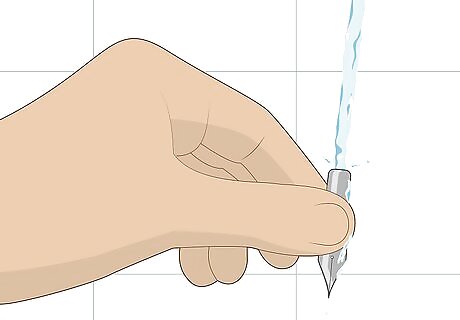
Flush out the nib. The nib is the part of the pen that you write with. Ink runs from the ink cartridge or converter through the nib onto paper. Run cool water through the nib. You can either use your faucet (running it lightly) or a syringe that will inject a small amount of water through the nib. Run the water through the nib until the water runs clear. Use cool water only. Do not use hot or warm water or alcohol to clean a fountain pen. Doing so can damage the inner workings of the pen. Instead, make sure you have clean, cool water. Distilled water usually works best.
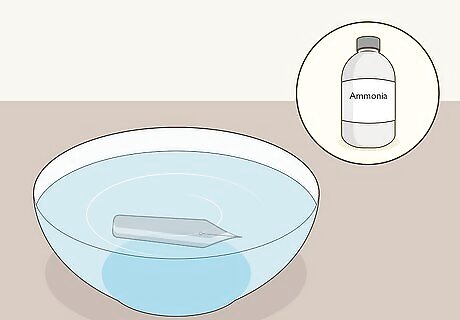
Soak the nib in an ammonia mixture overnight. If your pen has a lot of dried ink that won’t break up with water, you can use an ammonia mixture to loosen the ink. Add one teaspoon of household ammonia to a cup of water. Ammonia will help break up dried ink and any other dirt that may have gotten into the nib. Put the nib in the mixture. Soak it overnight. You can also use vinegar instead of ammonia. Use one teaspoon of vinegar with one cup of water. Do not use ammonia on Wahl Eversharp pens from the 1920s and 1930s. Likewise, don’t use ammonia to clean a pen with aluminum parts. These pens will be damaged by the ammonia. Do not use any cleaners or soaps on your pen. These will damage your pen. Do not soak nitrocellulose pens in ammonia, as the ammonia will discolor the pen’s covering
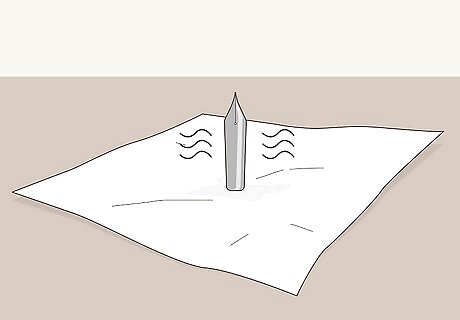
Allow the nib to air dry. Shake the nib a few times to get any excess water out. Then leave it out for several hours (or overnight) to allow it to air dry. You can rest the nibs upright on top of a paper towel. The paper towel will help wick away moisture from the nib as it dries overnight.
Cleaning the Converter

Detach the converter from the pen. Take the pen apart so that the converter is removed from the rest of the pen.
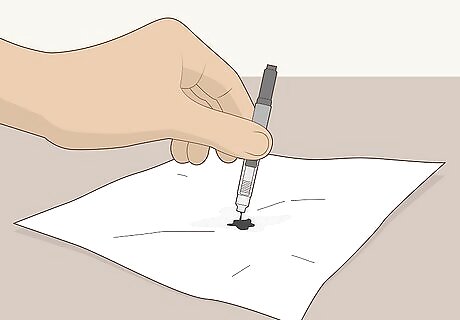
Dump out the excess ink from the converter. Take care that the ink doesn’t spill where you don’t want it (on the table, floor or your clothes). Pour the excess ink into the garbage or into a paper towel.

Flush the converter with cool water. Running cool water through the converter will dislodge any ink particles and clear it out. You can either use a syringe that will allow you to run water through the converter, or you can use the faucet. If you run water through the converter with the faucet, be sure to run the water very lightly. Otherwise, water can get behind the piston seal in the converter and may create a moldy-looking blob of ink that is difficult to remove.
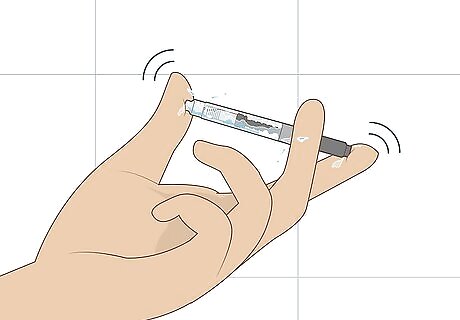
Shake some water inside the converter. Cover up the end of the converter with your finger. Give the converter a good shake in order to break up any remaining ink that is inside the converter.
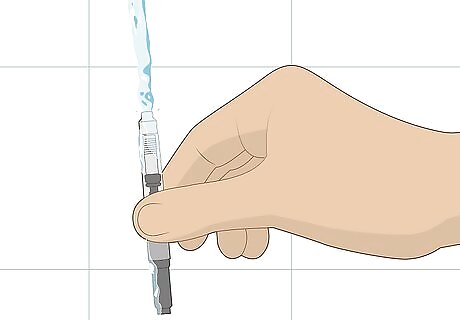
Rinse out the converter with water. Run cool water through the converter again until the water runs clear.

Allow the converter to air dry. Set the converter upright on top of a paper towel and let it air dry overnight.
Polishing the Outside

Use silver polish on a pen made of silver. For pens that are made of silver, sterling silver, or plated silver, use a polishing cloth with a little dab of silver polish. If your pen has etching on it, you can use some silver polish with a toothbrush. This will work the silver polish into the grooves of the etching.
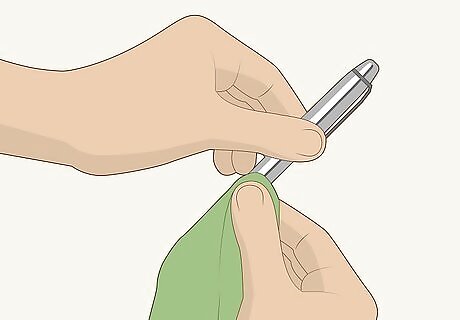
Use a soft cloth to clean hard metal finishes. Many fountain pen exteriors are made of platinum, palladium, stainless steel or chrome. These metal finishes can be buffed with a soft cloth.
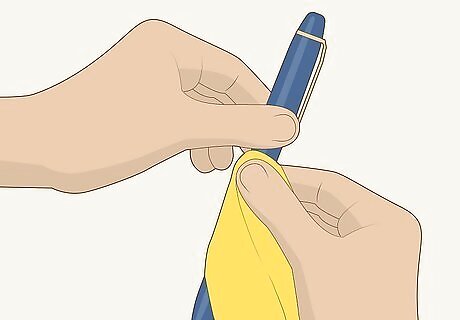
Use a soft cloth to clean celluloid, lacquer, and fine resin finishes. Older pens may have a celluloid finish, which is a finish that predates modern plastic. Just use a soft cloth to clean the celluloid. If your pen has a lacquer or painted surface, use a soft cloth to clean it. Do not use any chemical or abrasive cleaners on this pen, as these will damage the finish. Fine resin finishes can be vulnerable to cracks and scratches. Use a soft cloth to clean these types of finishes.
Storage
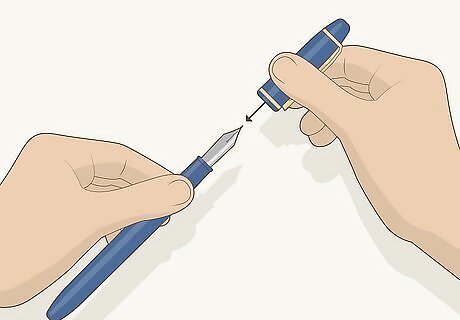
Keep the cap on the pen. When you are not using your pen, keep the cap on it. This will prevent your pen from drying out.

Store your pen pointing upwards in a cup or other pen holder. If you leave your fountain pen lying down, the ink will dry up in the nib.
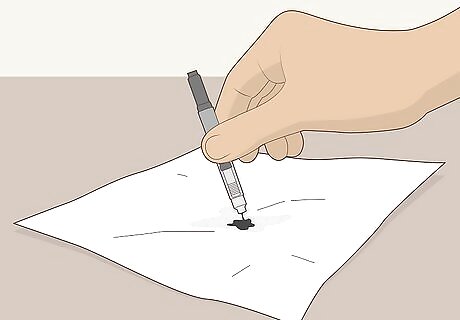
Remove ink for long-term storage. If you are planning to store your pen for longer than about a week, you should remove the ink so that it doesn’t dry up. Remove the ink cartridge and clean out the nib. Allow the nib to dry fully before storing the pen. Then you can store this pen in a pen case. If you leave the ink in the pen, the ink’s acids will mix with oxygen and start oxidizing the nib.
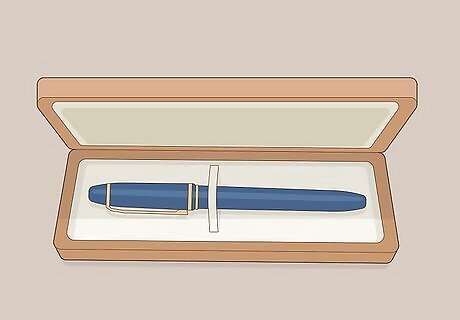
Store unfilled pens in a pen case. Pen cases are intended to allow pens to lie flat. This is not beneficial for pens that have ink in them, since it will allow the ink to settle in the nib. Use these pen cases if you have already removed the ink, or if the pen is brand-new and you haven’t installed an ink cartridge yet.


















Comments
0 comment